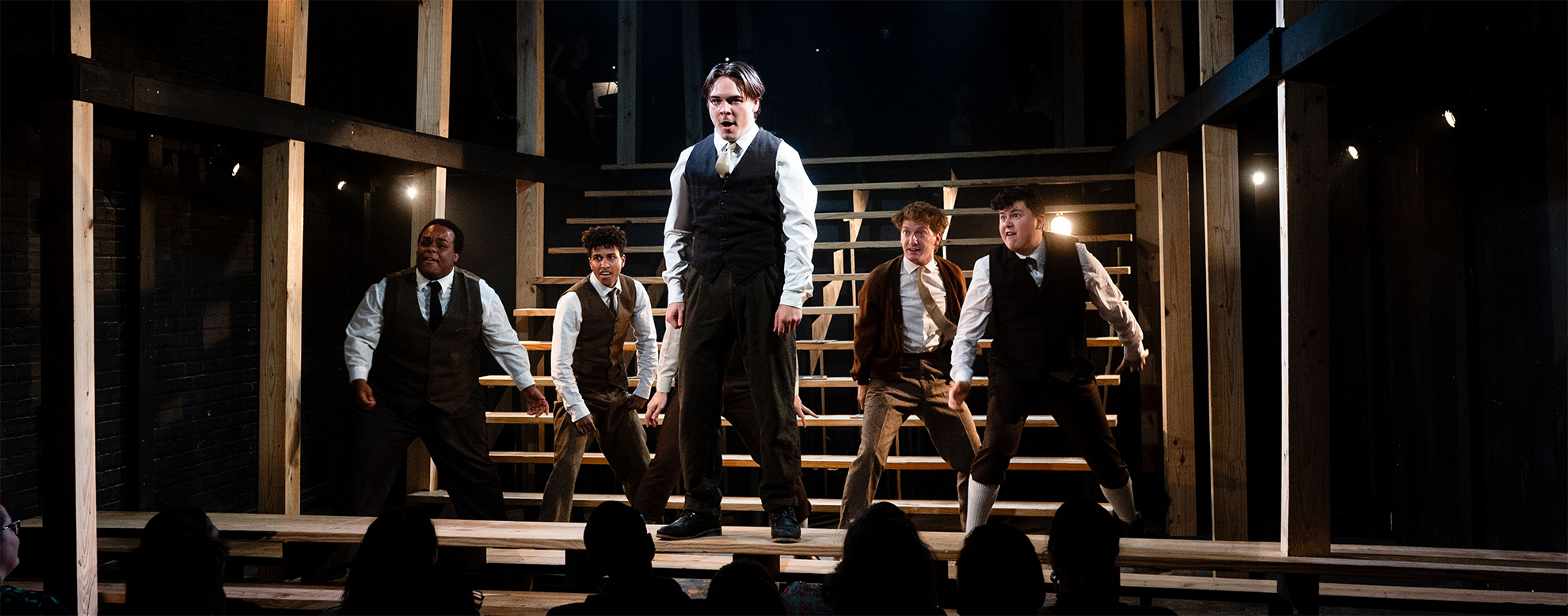A whimsical childhood bedroom with an open window welcoming Peter Pan, a minutia-strewn faculty break room in an intercity high school, a cabin at the edge of a darkened forest that seems to hold a void in reality: These are some of the worlds Rec Room executive director and resident scenic designer, Stefan Azizi, has created over the years in one of the smallest theater spaces in all of Houston.
Covering visual as well as performance arts, I often compare that moment when the curtain rises on a set in a large theater, filled with an audience of thousands, like viewing a glorious painting from afar. Whether the stage holds a single room of a momentous moment in a character’s life or fairytale landscape in a mythical universe, we get the big picture. As Azizi says, we can observe and maybe even judge. But when we walk into a small theater, likely with no curtain to rise, we’re closer inside, seeing both the whole picture and all the brushstrokes that went into the picture’s creation.
I wondered if Texas set designers known for creating big worlds in small spaces made some of the same distinctions.
Azizi says when first focusing on stage design in college they didn’t stipulate different rules for different sized spaces. “We were always working in big spaces, for all of our theoretical designs. We were in huge spaces, honestly,” he says, but also found an oddly shaped, smaller studio space became his favorite space for experimentation.
Scenic designer and assistant professor of theatre at UT Arlington, Leah Mazur, has designed sets for all sized stages in north Texas from Dallas Theatre Center to the intimate spaces of Undermain and Second Thought Theatres. For Mazur, the design process has more to do with the individual quirks of each space than the size. “I believe space is alive and reflects back to us its own stories and history. Big or small venues, I want to feel what it has to say. Each space shares a different story that guides my work in its own unique way.”

1 ⁄12
Rolando Chusan and Andrew Chavez in the Rec Room Arts production of Danny Tejera’s Toros, directed by Lily Wolff, set design by Stefan Azizi. Photo by Tasha Gorel.
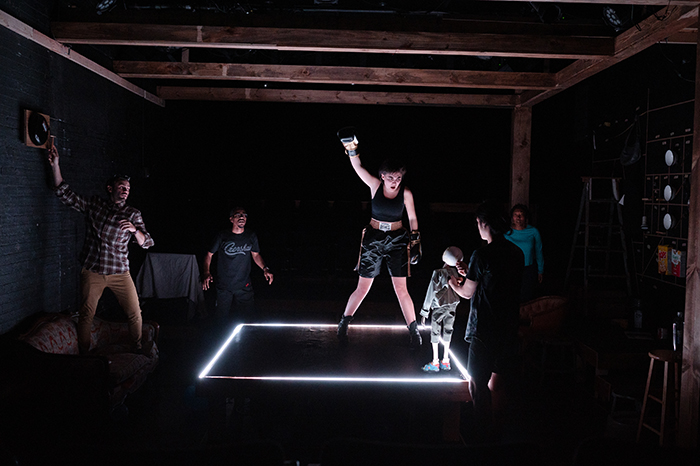
2 ⁄12
The cast of the Rec Room Arts production of Hansol Jung's Wolf Play, set design by Stefan Azizi. Photo by Tasha Gorel.
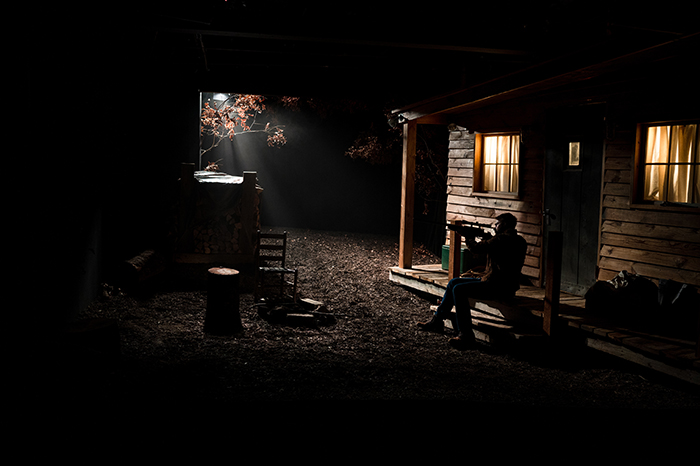
3 ⁄12
Jay Sullivan in the Rec Room Arts production of Will Arbery’s Heroes of the Fourth Turning, set design by Stefan Azizi. Lighting by Paige Seber. Photo by Tasha Gorel.
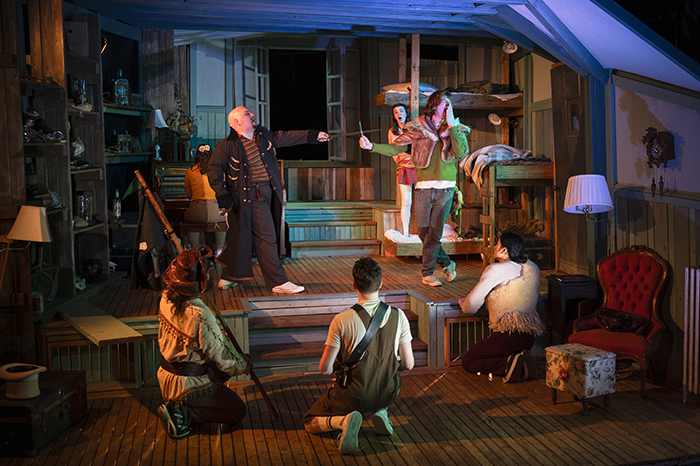
4 ⁄12
The cast of the Rec Room Arts production of Peter Pan, by J.M. Barrie adapted & directed by Matt Hune, set design and lighting by Stefan Azizi. Photo by Tasha Gorel.
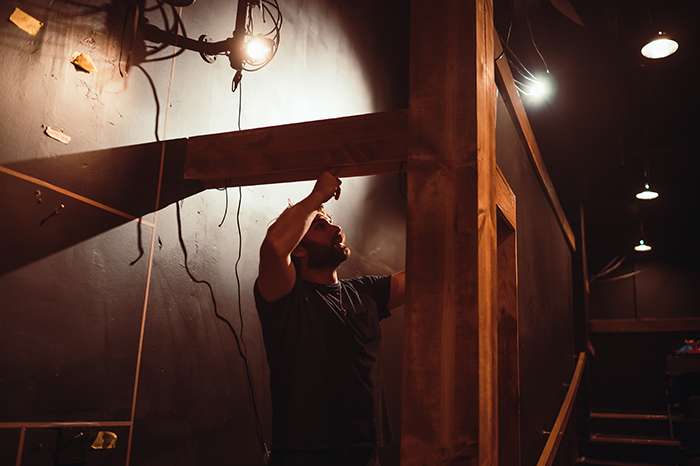
5 ⁄12
Stefan Azizi tinkering with the final tricks on the set for Room Arts production of Wolf Play before a final technical rehearsal. Photo by Tasha Gorel.

6 ⁄12
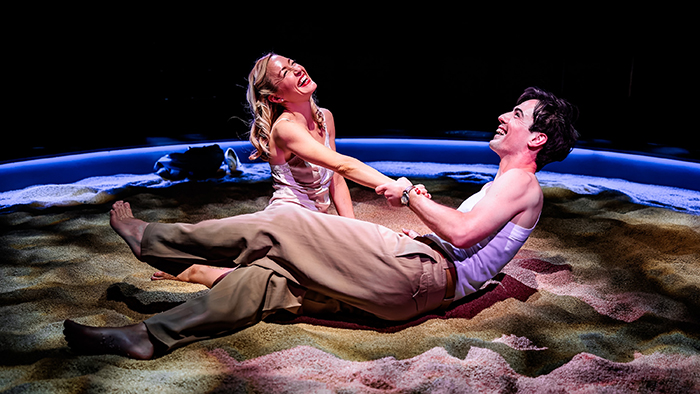
7 ⁄12
Maggie Anderson and Jake Roberson in the ZACH Theater production of Robert Shenkkan’s Bob and Jean: A Love Story, directed by Dave Steakley. Scenic Design by Michelle Ney. Photo by Axel Buecker.

8 ⁄12
Danielle Trevino in the Texas State University production of Bertolt Brecht’s Mother Courage And Her Children: A Chronicle of the Thirty Years War, translated by Tony Kushner; directed by Holly Nanes, with scenic design by Michelle Ney; Photo by Cheri Prough.

9 ⁄12
Captain Milbourn and Parker Gray in The Undermain Theatre production of Brian Dang’s H*llo K*tty Syndrome, directed by Garret Storms, scenic design by L. Mazur. Photo by Paul Semrad.
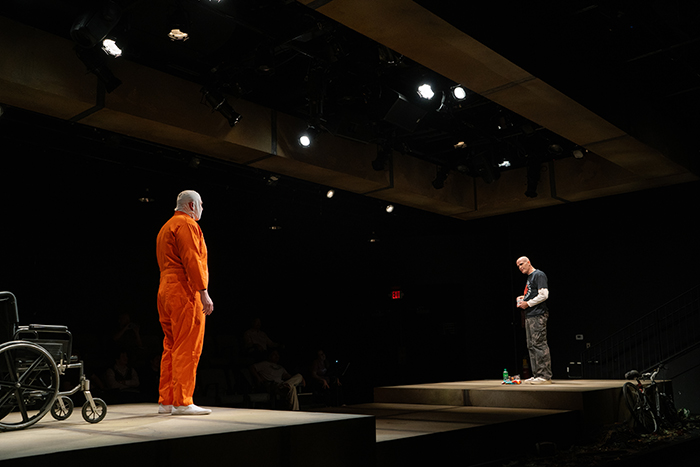
10 ⁄12
Taylor Harris and Jonathan R. Freeman in the Amphibian Stage production of Gabriel Jason Dean’s Rift, or White Lies, directed by Lily Wolff, scenic design by L. Mazur. Photo by Evan Michael Woods.
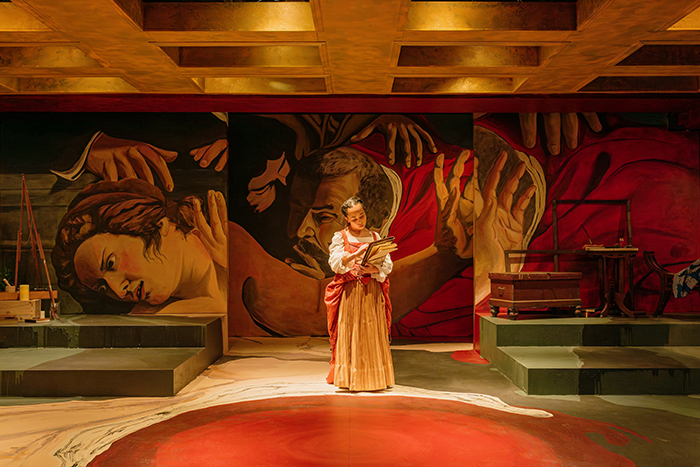
11 ⁄12
Maddie Suttles in the Circle Theatre production of Lauren Gunderson’s Artemisia, directed by Taylor Staniforth, scenic design by L. Mazur. Photo by Evan Michael Woods.
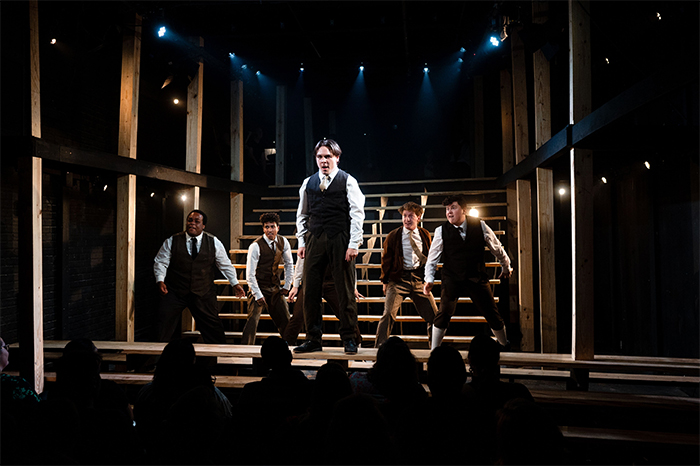
12⁄12
The cast of the Rec Room Arts production of Spring Awakening, book and lyrics by Steven Sater, music by Duncan Sheik, directed by Matt Hune, set design and lighting by Stefan Azizi. Photo by Tasha Gorel.
“Most of the time when I am working in a small space, it’s either an arena (audience on all sides ), or thrust (audience on 3 sides) configuration,” she explains. “I tend to think of the space more sculpturally and environmentally. In those spaces, the audience is physically in the environment, so it is important to think of how they are immersed in the story.”
Designing for a play or musical that has a setting of one defined room isn’t necessarily any easier than trying to depict vastness in a small theatre. When creating the set for Rec Room’s production of Toros, set in a Madrid family’s garage that has been turned into a music studio, Aziz had to lean into building “a real thing,” constructing a real, working garage door. A few seasons ago, he even constructed a revolving stage from scratch.
“We’re constantly solving things here in ways that have nothing to do with theater training and everything to do with willingness, willpower, and understanding of our tools that we have,” says Azizi when faced with the problem of how to build, power, and rotate a stage in order to depict two different settings for the play King James. “I literally had a friend in the back on a bicycle rotating them.”
While Ney certainly had many more technical resources when designing the set for the epistolary play Bob & Jean: A Love Story at Zach Theatre’s Whisenhunt Arena stage, which holds less than 150 seats, the multiple settings presented a problem.
“The concept of time was important to the director, Dave Steakley, and he had the image of an hourglass as an overwhelming metaphor,” explains Ney, noting that the script also references scenes on beaches. “I was struck by the sense of spinning around the world, seeing it from new perspectives as their relationship faced the challenge of separation and their understanding of the world and themselves grew. With that in mind, I created a sandbox in which the scenes could play out, with the audience surrounded by 46 abstract paintings of the earth and sea. During moments when Bob and Jean were separated physically and emotionally, streams of sand dropped from above.”
And when one small stage must hold an entire life, sometimes the trick is to go big and play with perspective. Such was the case for, Mazur, when designing for Fort Worth’s Circle Theatre production of Artemisia about Italian Baroque painter, Artemisia Gentileschi.
“Susanna herself was massive, spread across several walls. She melted down the platforms and onto the deck of the stage and into the audience. It was so captivating, witnessing a woman at this scale, in a moment that is so raw and vulnerable. There’s something about making things really big in contrast to what we know them to be that is undeniably powerful.”
One of Azizi’s most stunning works in the last few years, that cabin on the edge of a dark nothingness a.k.a the Heroes of the Fourth Turning set, came about with a lot of collaboration from colleague and friend, New York lighting designer Paige Seber. The work started with the problem of creating that vast void space on twenty feet of stage, which would also need to hold the full front of a cabin.
“How do I hide or how do I make a series of infinity points?” Azizi asked himself. “I need entrances. I need all these other basic things you need for an actor to make it onto a stage or use a stage. But you always start with the problem, which for that one was: how do I make these kinds of void points, these places that will disappear into black?”
Though Seber has two shows off-Broadway right now, Azizi hopes she will return for their fall production of Angels in America.
“That’s seven and a half hours of play that needs to utilize essentially the same base of the set. It’s a huge challenge. And it has to have the expanse of being super grounded all the way to being in the heavens,” explains Azizi who say artists, like Seber, enjoy working at Rec Room because the space allows them to “play” and “because we are just willing to take our limits and use them as advantages.”
“I worked at Illinois Shakespeare Festival, which has a semi-circular audience arrangement and stage with an incredibly steep rake of the house,” said Ney. “When I sat in the first row, I felt like I was in the world with the actors, but when I sat near the back where my eye level was maybe 15 feet above the stage, I felt like I was more of an observer of the world. Up close, I’m immersed and have a more intimate relationship with the performers.”
Mazur also makes the point that in many small theater configurations the audience is also seeing each other up close, as well, and perhaps becoming more connected.
“I love that a smaller space invites people to experience the world more intimately, both through their own perceptions, and the witnessing of others’ perceptions, too. I think it makes the design live in a way that it may not necessarily get to in a large setting.”
For Azizi there’s also the reward of that audience gasp and their wonder at how Rec Room created those sometimes minutely detailed and character driven, sometimes expansive, worlds in such a tiny space. “That’s huge. That’s now the thing that I’m most chasing, making sure next time we’re offering something that gets people excited in a different way than last.”
—TARRA GAINES

